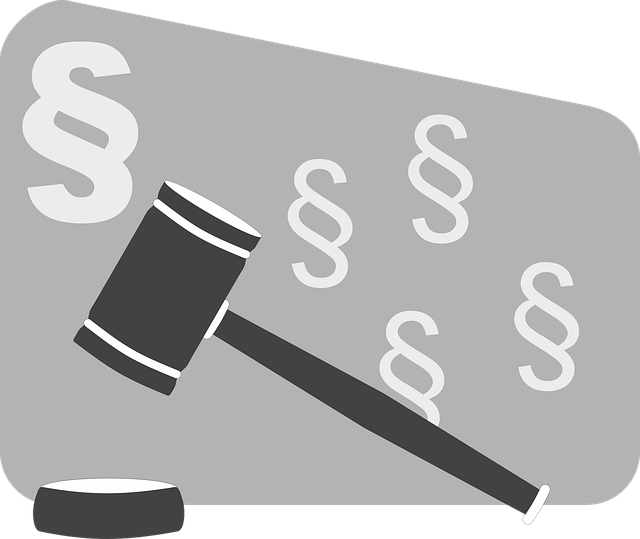Understanding Entrapment Defenses in Criminal Law is crucial for litigation risk management, especially in high-stakes white-collar cases. By analyzing entrapment strategies employed by law enforcement during investigations, legal professionals can build robust defenses, protect clients from unfair prosecution, and navigate complex regulatory landscapes effectively. This proactive approach ensures justice while maintaining public trust and mitigating financial and reputational risks.
In the intricate landscape of criminal law, understanding entrapment defenses is paramount for effective litigation risk management. This comprehensive guide delves into the defining aspects and profound impact of litigation risks associated with entrapment. We explore strategic safeguards, providing insights into their application to mitigate potential pitfalls. Through real-world case studies, we navigate complex scenarios, offering invaluable lessons in navigating entrapment challenges within the criminal justice system. Uncover key strategies to fortify defenses and ensure fair outcomes.
- Defining Litigation Risk and Its Impact
- Identifying Potential Entrapment Defenses
- Strategic Application of Legal Safeguards
- Case Studies: Navigating Entrapment Scenarios
Defining Litigation Risk and Its Impact
Litigation risk, a critical aspect of legal strategy, refers to the potential for a case to escalate and result in significant financial and reputational damage. It encompasses various factors, from the complexity of the legal dispute to the public perception of the involved parties. In high-stakes cases, where millions of dollars are at stake, understanding entrapment defenses in criminal law becomes paramount. Entrapment, a legal doctrine, argues that an individual should not be held responsible for a crime they were set up or encouraged to commit by law enforcement or government agents. This strategy is particularly relevant in white-collar defense, where corporate entities and high-ranking officials face charges stemming from alleged fraudulent activities.
The impact of litigation risk can be devastating. For businesses and individuals alike, a negative outcome may lead to the complete dismissal of all charges—a best-case scenario—or substantial monetary settlements. Moreover, even if found not guilty, the legal battles themselves can drain resources, disrupt operations, and harm an organization’s public image. Thus, proactive litigation risk management is essential to mitigate these potential consequences.
Identifying Potential Entrapment Defenses
In the realm of criminal law, understanding entrapment defenses is paramount for effective litigation risk management. Entrapment occurs when law enforcement officials induce a person to commit a crime they would not have otherwise contemplated or engaged in. Identifying potential entrapment defenses involves scrutinizing the interaction between the accused and law enforcement, focusing on factors such as persuasive tactics, inducements, and the accused’s state of mind. By recognizing these defenses, legal professionals can navigate complex cases more strategically, aiming for a complete dismissal of all charges in exceptional circumstances.
The concept is crucial in balancing the need to enforce the law with the principles of fairness and individual autonomy. An unprecedented track record of successful entrapment defenses highlights the importance of thorough investigations and ethical policing practices. This strategic approach ensures that justice is served without compromising the integrity of the legal system, ultimately reinforcing public trust in jury trials and due process.
Strategic Application of Legal Safeguards
In the strategic application of legal safeguards, understanding entrapment defenses in criminal law is a critical component for effective litigation risk management. Entrapment defenses, while complex, play a significant role in protecting individuals from unfair prosecution, particularly in high-stakes cases involving white collar defense. By examining the intent and conduct of law enforcement throughout all stages of the investigative and enforcement process, legal teams can identify potential entrapment arguments and build robust defenses.
This proactive approach not only strengthens the client’s position but also ensures that justice is served without compromising the integrity of the legal system. In navigating high-pressure situations, a deep understanding of these defenses allows legal professionals to navigate complex regulatory landscapes, mitigate risks, and achieve favorable outcomes for their clients.
Case Studies: Navigating Entrapment Scenarios
Understanding Entrapment Defenses in Criminal Law is a crucial aspect of Litigation Risk Management, especially when dealing with white collar and economic crimes. Entrapment occurs when law enforcement officers or their agents induce an innocent person to commit a crime they would not have otherwise contemplated. Case studies from real-world scenarios help illuminate the nuances of this defense.
By examining these cases, legal professionals can gain insights into how entrapment arguments are constructed and presented in court. Understanding the various stages of the investigative and enforcement process is key, as it involves recognizing when an officer’s actions cross the line from legitimate investigation to unduly influencing a potential defendant. This knowledge empowers attorneys to protect their clients’ interests throughout these delicate situations.
Understanding entrapment defenses in criminal law is paramount for mitigating litigation risk. By defining and recognizing potential scenarios, legal professionals can strategically apply safeguards to protect clients from unfair prosecution. The case studies presented offer valuable insights into navigating entrapment challenges, demonstrating the practical application of these defenses. Embracing a proactive approach through identifying robust defenses and staying informed about legal developments is essential to managing litigation risk effectively.






